In the 1930s and 1940s the Victorian Railways was facing serious competition with not only the increasing popularity of the car but also many bus coach services that in many cases served the same tourist destinations that could be reached by rail.
Coach companies that today are but a memory included Palmer’s Overland Tours, Murray Valley Coaches and Ansett Roadways provided alternatives to travel to places such as Hamilton, Portland, Echuca, Mildura and in some cases a more direct service to and from Melbourne.
To counter the impact on its passenger business, the Victorian Railways extensively advertised a range of cheap fares, altered and additional services particularly during holiday periods to attract patronage. They also advertised tours and excursions arranged for specific groups and organisations. Many of these posters are now held at the State Library and form the Victorian Railway poster collection.
This advertising was primarily in the form of large, colourful posters that were pasted up on billboards at railway stations across the state and also at the Victorian Government Tourist Bureau. Such an example is shown below.

This particular example is advertising an excursion from Maffra to Walhalla and is interesting for several reasons.
Firstly the excursion ran on a Sunday during a time when country passenger services largely did not operate on a Sunday except to major regional centres such as Geelong.
Secondly for the unsuspecting passenger it is not clear that you need to change trains at Moe for the Walhalla connection. The line from Moe to Walhalla was narrow gauge (2 foot, 6 inches in the old scale). A hint is provided at the bottom of the poster which states that accommodation on the Walhalla train from Moe is ‘strictly limited’.
Finally in this example, it is a very long day out with a 6.45am departure from Maffra arriving back around 15 hours later at 10.05pm.
The poster’s design is simple and use of a ‘sans serif’ font stands out clearly.
Given we are close to Christmas, have a look these cheap fares advertised below for the Christmas period for 1937-8. Back then it was possible to travel to Daylesford either via Ballarat or Woodend. Bright would have required a change to the Victorian Railways Motor Bus Service at Wangaratta and depending on the day of the week it was possible to travel direct to Portland from Melbourne without changing trains at Ararat.
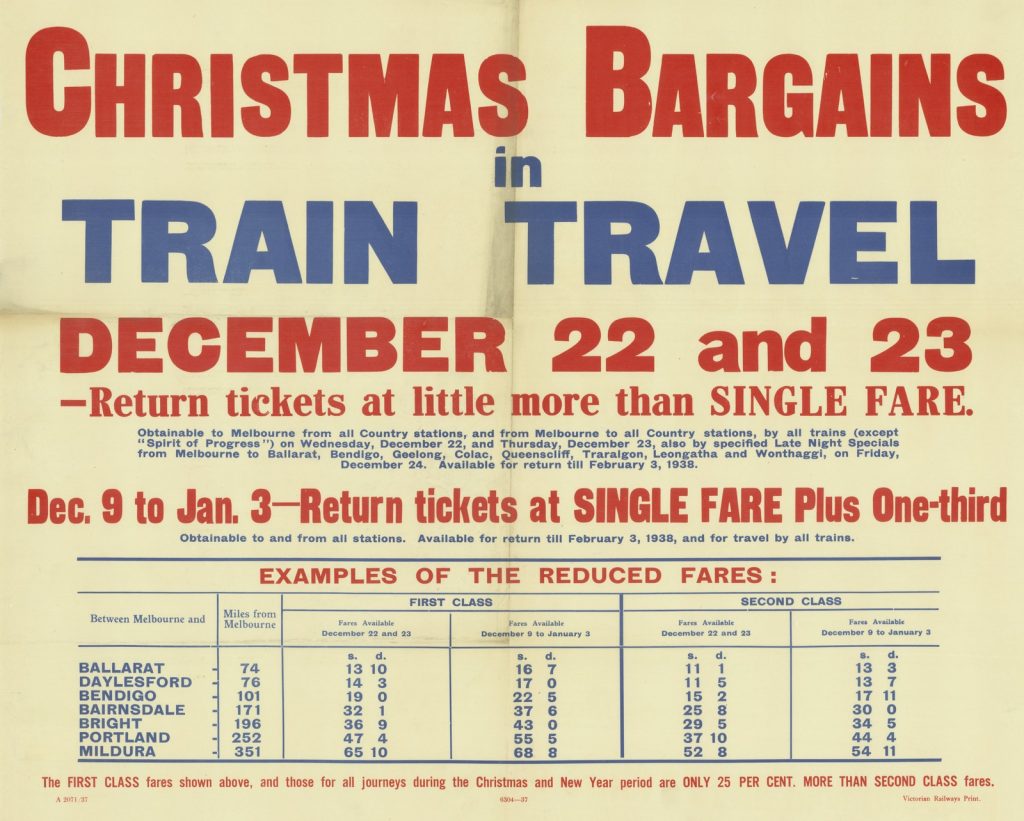
Other types of posters were to advise the travelling public of altered or adjusted services such as shown in the examples below.
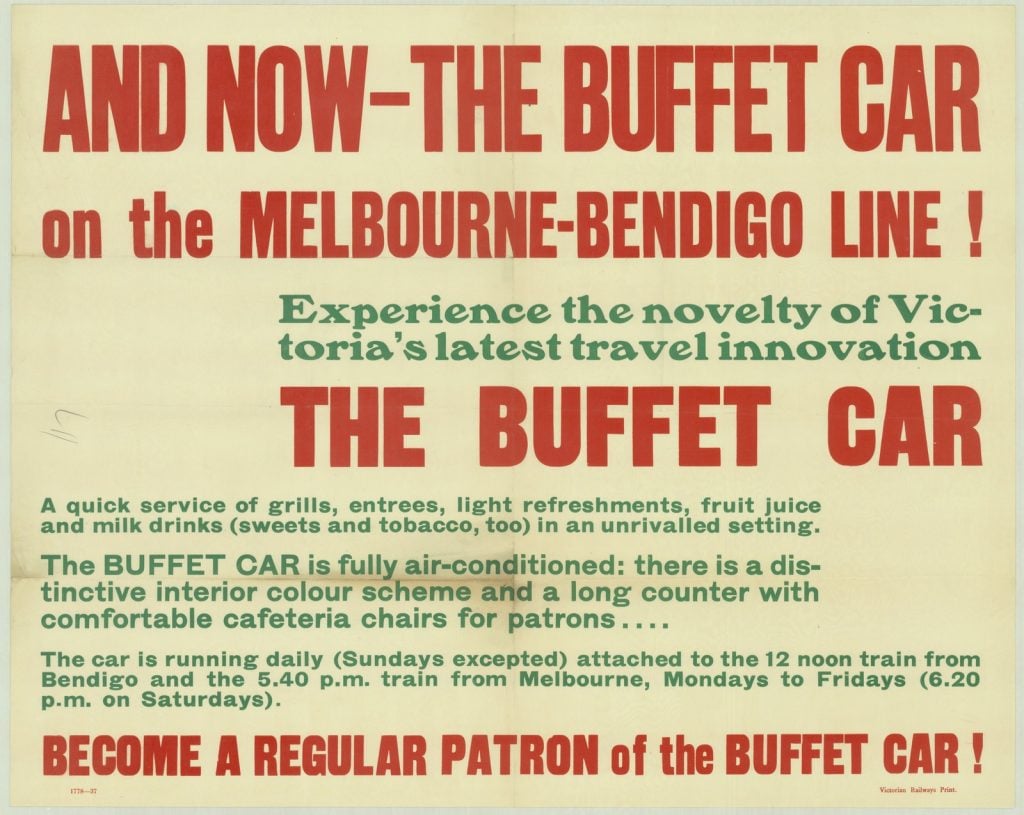
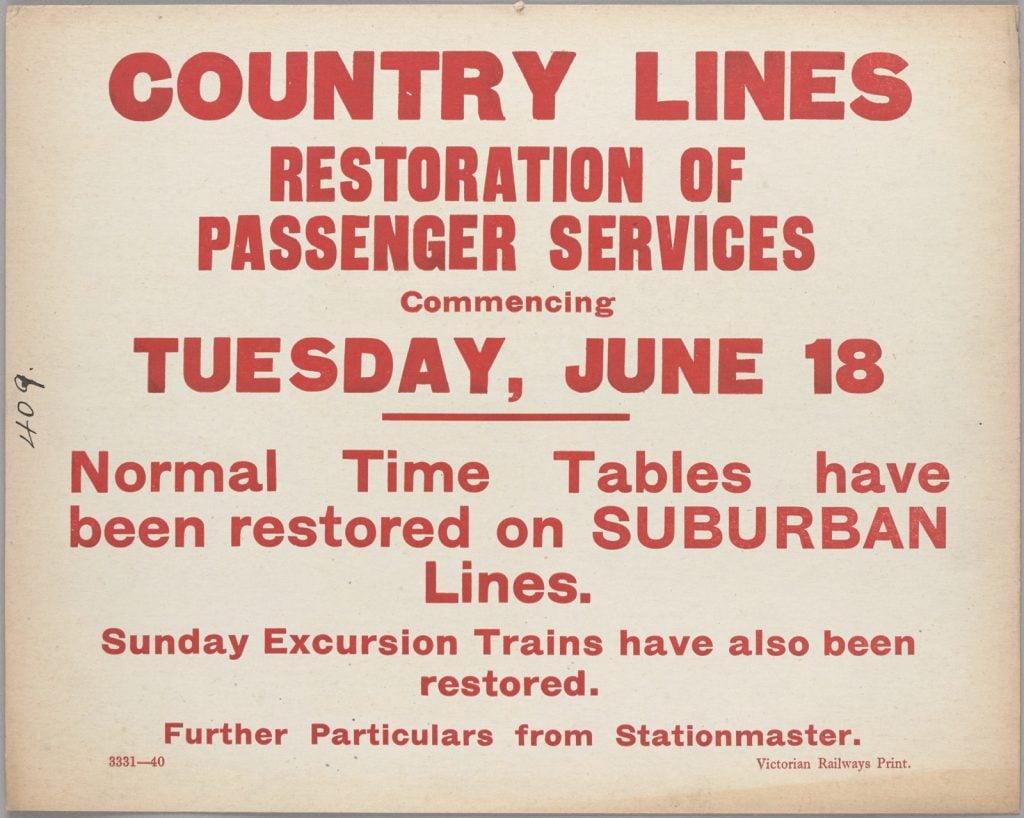
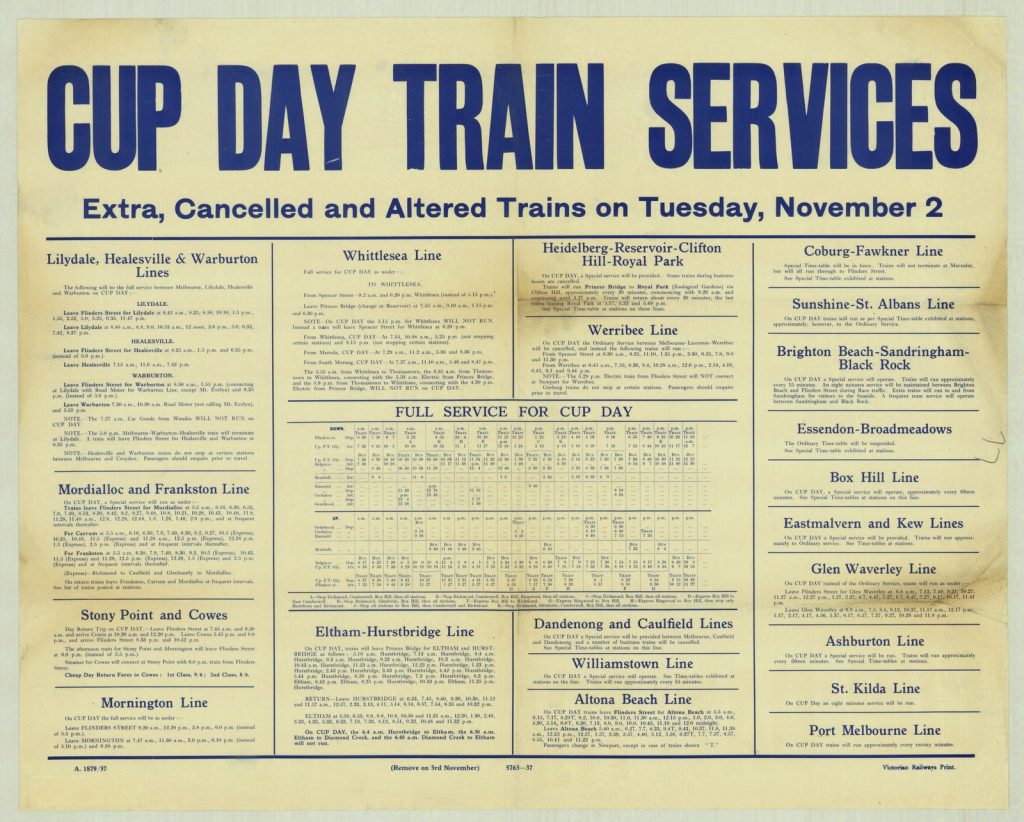
The buffet car on Bendigo line trains was a regular feature for many years. The buffet carriage would be attached to the midday departure from Bendigo to Melbourne (the train originating from Swan Hill earlier that day) and return on the late afternoon service to Bendigo.
The poster advertising changes to trains on Cup Day in the metropolitan area of Melbourne in 1937 is interesting in terms of how certain railway lines are described. For example the Glen Waverley line back then had most trains terminating at East Malvern with a shuttle service operating onwards to Glen Waverley with the exception of certain services in peak hour that ran direct. The Sandringham line included Black Rock in the description as this referred to the railway trams that connected with trains at Sandringham. Stony Point and Cowes refers to connecting ferries from the Stony Point terminus to Phillip Island. Sadly it is no longer possible to travel to Warburton or Healesville by train.
Not all posters were fully dated as is illustrated by the three examples above. If you look closely each poster has a printer’s number on the bottom left hand corner, e.g. ‘3331-40’ in the case of the poster advertising the resumption of normal passenger services. The last two digits of the number indicate the year of printing.

The Victorian Railways not only advertised services to the races such as Cup Day but also to events such as an international tennis tournament at Kooyong tennis complex which was (and still is) adjacent to Kooyong station.
This poster was advertising two tournaments – the Victorian championships in early December and a two day match against Germany in early January. The poster is not dated but it is believed to be around 1934. Note the attire of tennis chamption D. Budge – very smart for the day.
Other events such as cycling at Parkdale on Cup Day in 1937 were advertised although when you looked at the poster there are no details of where the event is in Parkdale.
According to the website Cyclingscrapbook the Parkdale velodrome was established in 1934 and was at what is now know as Gerry Green Reserve on Nepean Higway at the corner of Imes Street (Melway reference 87 E8). Very little of the original track now remains.
Posters were not only used to advertise excursions, cheap fares or altered services, but were used to promote safe travelling on the railway network as shown in the example below. The poster gravely advises passengers to ensure that the doors of the carriage are securely closed – referring to the ‘swingdoor’ suburban electric trains in use at the time and selected country passenger carriages.

There are many other fascinating posters held within the collection which represent a time when advertising wasn’t all about targeted ‘push’ notifications to your phone or Facebook page and life perhaps was a little less fast-paced.
Finally, Speaking of fast-paced, back on 3 May 1926, the inaugural “Geelong Flier” was introduced between Geelong and Melbourne in an effort to speed up the service and provide an alternative to competing buses. Below the inaugural train is shown on platform one at Flinders Street with locomotive A2 class number 906 at the head of a train comprising “E” class six-wheel bogie carriages.

The following is a poster from the collection advertising some accelerations and changes to the service in 1938.
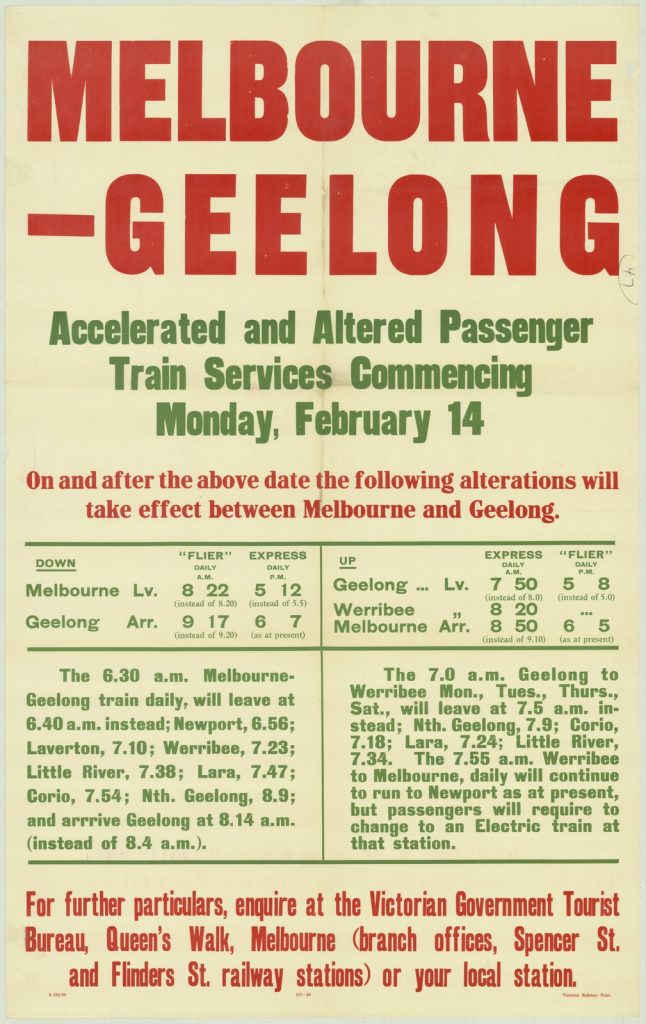
It is interesting to compare the travel times to today’s service. The frequencies may have improved dramatically but overall there is no real difference in travel times back in 1938 compared to 2022.
Enjoy exploring the collection!

